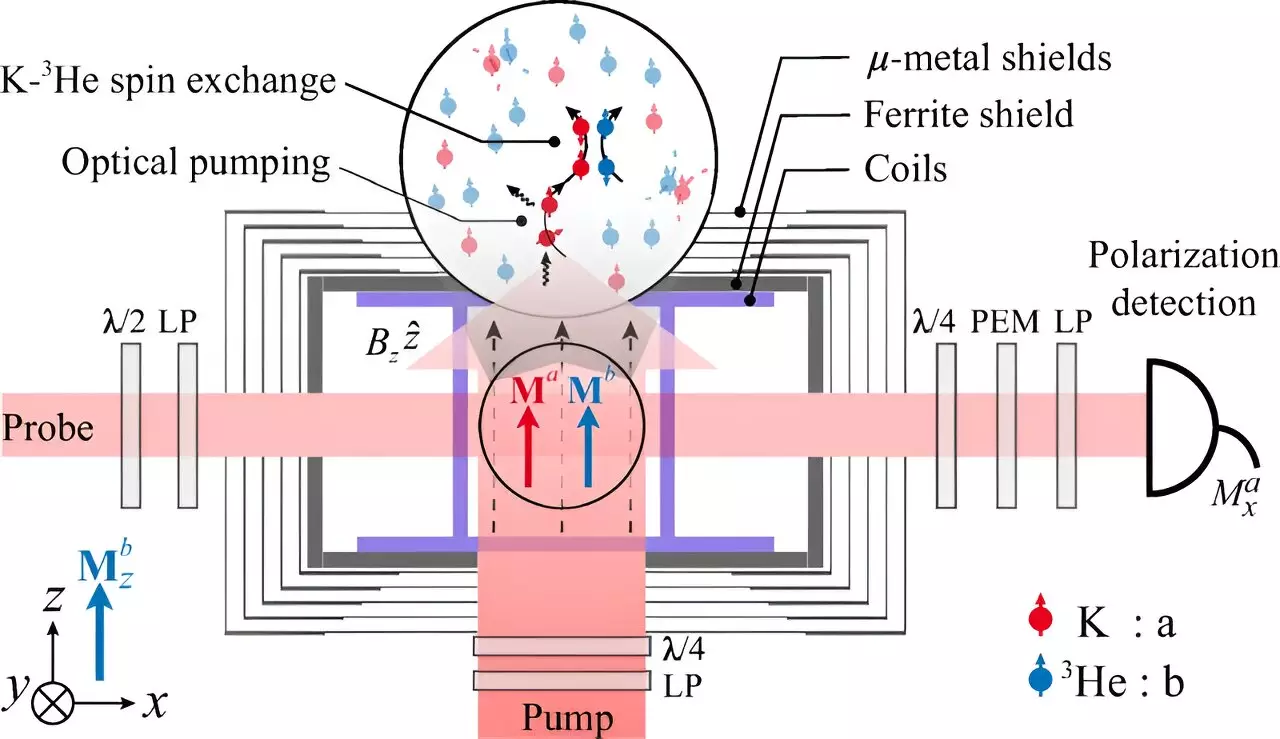Recent advances in the intersection of quantum mechanics and experimental physics have revealed an intriguing phenomenon known as Fano resonance interference, notably among mixed atomic spins. Led by a dedicated research team from the University of Science and Technology of China, this breakthrough addresses the pressing challenge of magnetic noise interference, which significantly hampers precise measurements in fundamental physics experiments. The publication of their findings in the prestigious journal Physical Review Letters highlights not just an academic milestone but a potential transformative approach for the future of experimental physics.
For decades, scientists have pursued exotic spin interactions that extend beyond the established frameworks of the standard model of particle physics. These interactions open new frontiers, such as the exploration for unknown particles that may constitute dark matter, as well as the hypothetical fifth force of nature. While traditional spin measurements utilize various methodologies to assess weak magnetic fields, the noise inherent in measurement environments often masks these critical signals. As researchers strive for unprecedented levels of precision, the challenge of isolating meaningful data from this background noise becomes increasingly vital.
Atomic comagnetometers, which employ the principles of nuclear spins, have emerged as formidable tools in mitigating magnetic field drifts and fluctuations. However, existing designs have limited efficacy, particularly concerning low-frequency magnetic noise. This limitation presents a significant barrier to conducting experiments probing exotic spin interactions, compelling physicists to explore alternative solutions. Prior approaches typically achieved only limited suppression rates, not addressing the wider frequency ranges required for sophisticated experimental setups.
The innovative approach taken by the research team is rooted in the magnetic noise self-compensation mechanisms. By creating a mixed atomic system utilizing potassium (K) and 3He gases, they have developed a framework whereby K, polarized by laser, acts as a tool for both polarization and readout of 3He nuclear spins. The process involves spin-exchange collisions, permitting a dynamic interchange of spin states that facilitates measurement accuracy. This methodology has ushered in a regime where both low-frequency and higher frequency magnetic noises can be effectively managed.
The researchers achieved effective suppression of magnetic noise across a broad spectrum of frequencies, extending from near direct current up to 200 Hz. Their findings indicate that by merely adjusting the angle between detection apparatus and the noise signals, they could significantly amplify the suppression of magnetic noise. This adaptability marks a vital departure from previous strategies, which struggled to maintain effectiveness across varying frequency domains, thus enhancing the potential for more comprehensive data collection.
The significance of this work extends well into the realms of fundamental physics. The capacity to enhance sensitivity for pseudomagnetic fields to a level of 0.1fT/Hz1/2 is profound. This level of precision could provide vital insights into elusive phenomena such as dark matter, thus pushing the boundaries of human understanding about the universe. Furthermore, refining techniques to suppress magnetic noise can catalyze advancements in various fields, including quantum computing, where precise measurements of spin states are crucial.
The intersection of Fano resonance and magnetic noise suppression not only marks a pivotal advancement in atomic physics but also sets the stage for a new era of experimental precision. As researchers like Prof. Peng Xinhua and Associate Prof. Jiang Min lead the charge toward innovative methodologies, the scientific community can anticipate a future enriched with transformative discoveries that could redefine our understanding of the physical world. With ongoing efforts to explore uncharted scientific territories, every breakthrough brings us one step closer to unveiling the mysteries that lie within the fabric of reality.


Leave a Reply